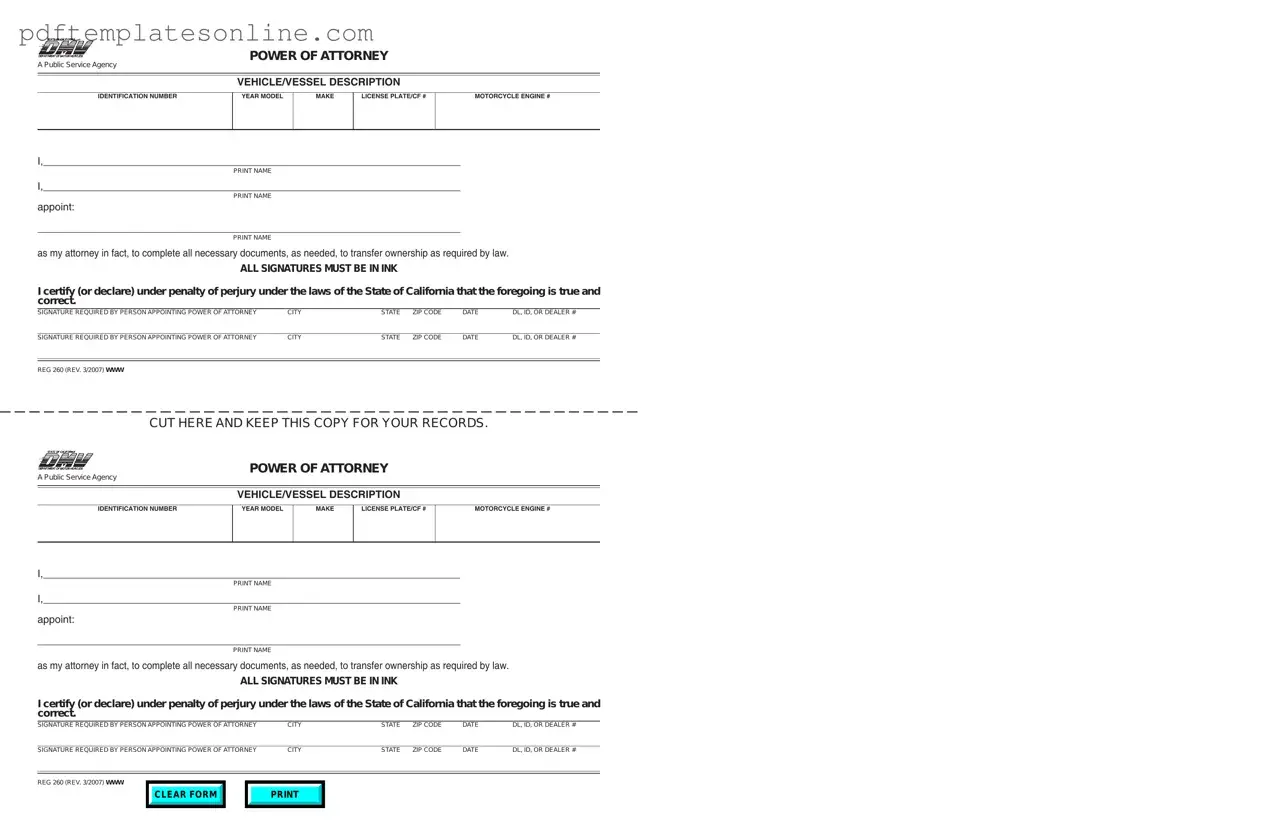Filling out the Vehicle Power of Attorney (POA) REG 260 form can be straightforward, but many people make common mistakes that can lead to delays or complications. One frequent error is not providing complete information. When individuals fail to fill in all required fields, the form may be rejected. Each section must be carefully reviewed to ensure that all necessary details, such as the vehicle identification number (VIN) and the owner's information, are accurate and complete.
Another common mistake involves signatures. The form requires the signature of the vehicle owner, but sometimes individuals overlook this crucial step. In some cases, people may also sign in the wrong place or use an illegible signature. This can create issues when the form is submitted. Always ensure that the signature is clear and placed in the designated area to avoid any processing delays.
Many people also misinterpret the purpose of the Vehicle POA. This form allows one person to act on behalf of another regarding vehicle-related matters. However, individuals sometimes mistakenly think they can use the form for other purposes, such as transferring ownership outright. It’s important to understand that the POA grants limited authority and does not replace the need for a title transfer when selling or gifting a vehicle.
Additionally, not checking for proper identification can lead to problems. When appointing someone as an agent, the person completing the form must ensure that the agent’s identification is valid and up-to-date. If the agent cannot provide the necessary identification, it may hinder their ability to act on behalf of the vehicle owner, causing unnecessary complications.
Lastly, people often neglect to keep a copy of the completed form. After submitting the Vehicle POA REG 260, it’s essential to retain a copy for personal records. This can serve as proof of the authority granted and can be useful if any disputes arise. Failing to keep a record can lead to confusion and potential legal issues in the future.
